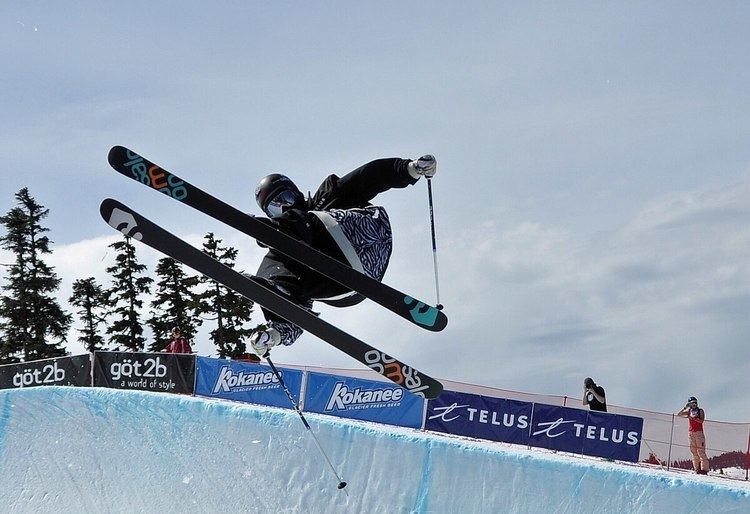Olympic 2014 | ||
 | ||
Highest governing body International Ski Federation | ||
Half-pipe skiing is the sport of riding snow skis on a half-pipe. Competitors perform a series of tricks while going down the pipe. The current world record for highest jump in a half-pipe is held by Joffrey Pollet-Villard, with 26 feet 3 inches (8.00 metres). The sport is considered to be dangerous compared to other sports, and helmets are required to be worn during competitions. Half-pipe skiing has been part of the Winter X Games since 2002, and made its Olympic debut at the 2014 Winter Olympics in Sochi, Russia. David Wise of the United States of America became the first Olympic champion in this discipline with a total of 92.00 points.
Contents
Competitions
Half-pipe skiing was formally endorsed by the International Ski Federation in June 2010, and was approved by the International Olympic Committee in April 2011 to be an official sport 2014 Olympic Games in Sochi, Krasnodar Krai, Russia. It has been a part of the Winter Dew Tour, the World Skiing Invitational, and the inaugural 2012 Winter Youth Olympics. Currently, the world record for the highest half-pipe ski jump is held by Peter Olenick with 24 feet 11 inches (7.59 metres).
Superpipe skiing
Superpipe skiing is an alternate form of half-pipe skiing that utilizes a superpipe (large halfpipe used in extreme sports), instead of a half-pipe. It has been a part of the Winter X Games since 2002. The 2012 Winter X Games champion was David Wise with a high score of 93.00.
Safety concerns
Half-pipe skiing is considered to be a dangerous sport compared to other forms of skiing. In January 2012, Sarah Burke died due to injuries suffered during a training accident. Helmets are required during competition, and there are airbags on the sides of pipes during practice runs. Colorado governor Bill Owens signed a law which protected ski-resorts from injury-related lawsuits.
